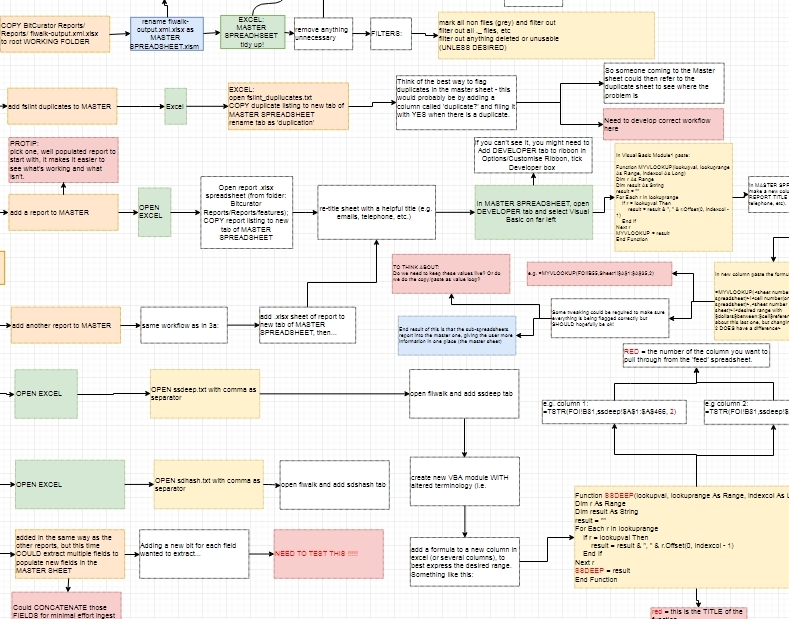For the past few years I’ve been working as Digital Archivist in Special Collections at the University of Leeds Library, and it’s been a slow and often frustrating shuffle toward a digital preservation ‘solution’ here while we try to balance that good old three legged stool of technology, organisation and resources mentioned by Sarah Mason in a previous post. I deal with literary archives and collections which are either entirely born-digital or hybrids of paper and digital, and our digital preservation workflow includes the use of both BitCurator and Archivematica.
Recently, I’ve been mapping out our BitCurator workflow, taking into account the range of material we might need to assess, analyse, review and curate prior to transfer into Archivematica. As you can probably imagine, trying to include all possible processes has meant this document has developed into a bit of a monster, but the end result ensures that we’ll be able to align workload with both staff time and processing power as and when needed, helping us schedule work and prevent traffic jams or backlogs.

Because we use Archivematica, I'm a regular attendee at Archivematica UK Users Group meetings which take place every six months or so. Here we can share our developments, queries or issues with the group. While the concerns of research data have dominated these meeting for some time, there are signs that the discussion is shifting to other areas. For this I’m grateful - Leeds has a separate RDL (Research Data Leeds) team to handle research data, freeing up my time to concentrate on the archival collections, so in a lot of the Research Data discussions I have felt a little redundant!
With the release of Archivematica version 1.6, Artefactual introduced a new ‘appraisal’ tab. There was a lot of excitement within the Archivematica UK Users Group about the way this could help with understanding and arranging the material. While the potential for more granular arrangement has been present for the past few updates, the new tab means users can interrogate the material a little more thoroughly.
I can appreciate the excitement about the new functionality, and I think we’re all looking forward to see how this can add to our understanding of the material we’re handling, helping us to make informed decisions on such matters as arrangement and de-duplication.
I also have reservations about Archivematica being seen as a one-stop-shop with which to process all of our deposited material. While the appraisal tab is a great development, and one which I can see being used for some of our deposits, I much prefer Bitcurator’s more comprehensive and tactile approach where I can pick and choose the tools to interrogate the material in a way I deem suitable, which vary considerably depending on the deposit.
I can see how these tools and others fit into the digital archivist’s tool kit, and am mindful that the material should dictate which tools need to be deployed: the procedures are not rigid, some processes might be run multiple times, some tools might be run in parallel. Results might be compared and consolidated, discussed with colleagues or fed into other processes. It should be flexible depending on the needs of the material being processed.
For instance, a simple deposit, with only a couple of files, might need very little archivist input; a slightly more complex deposit with multiple file formats arranged into folders might need a bit more curation - an archivist’s input to ensure it’s arranged in a manner that makes sense to the user; and if it’s an entire hard drive, well, this might need de-duplication; the running of various metadata extractions to identify and draw together related files; a re-arrangement of material and the auto-population of archival records with data relevant to the user.
Each of the examples outlined above might need a slightly different selection of tools in order to succeed, and it’s my place, and ours working in the field of digital preservation, to make informed decisions on how best to run these tools.
I guess what I’m really trying to say is that our approach needs to be as nuanced as the material which we process, and that the tools we use should be led by the work we need to do.













































































































































